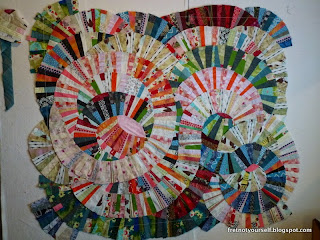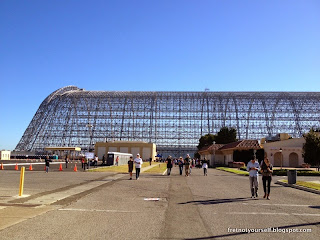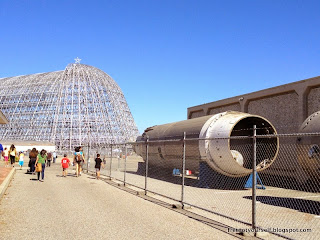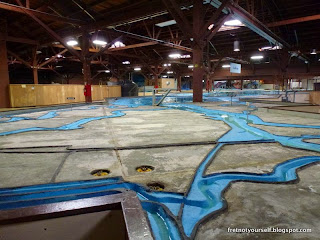One of my challenges this past year was to co-chair an exhibit for CQFA (California Quilt and Fiber Artists.) Primal Green II is on display at the Wallace Stegner Environmental Center located on the 5th floor of the main branch of the San Francisco Public Library through April 25, 2015.
 |
| Sign for Primal Green II exhibit |
This sign at the exhibit entrance includes detail views of works by Dolores Miller, Reva Bailey, Diane Carver, Jennifer Landau, Caroline Ogg and Virginia Schnalle. The twenty artists who participated use techniques including silk painting, weaving, felting, paper piecing, stamping, dyeing and applique to create their art.
We included QR codes with the displays. These versatile bits of code link to text, video or audio files - basically anything that can be put on the web. Smartphone apps read the QR code and send you to the referenced site. Most are used as an advertising or merchandising tool but we simply wanted to enhance viewer knowledge and interest. So we created audio files discussing how or why we made a piece.
While some companies create QR codes for a fee, freeware exists to generate your own. One of our members wrote a short program to create ours. I think the main difference is where your file is hosted. If you already have a website, it seems simpler to keep it there. Commercial companies place it on their site.
Despite being incredibly enthused, each of us was hesitant to actually record. What would we say? How long could/should it be? Why didn't some famous actress come sweeping in to do the recordings? And a scriptwriter! Ok, the last two are pipe dreams but we were extremely self-conscious about our own abilities. It took several attempts to record without hesitation. Writing a script definitely trumps ad lib.
We included QR codes with the displays. These versatile bits of code link to text, video or audio files - basically anything that can be put on the web. Smartphone apps read the QR code and send you to the referenced site. Most are used as an advertising or merchandising tool but we simply wanted to enhance viewer knowledge and interest. So we created audio files discussing how or why we made a piece.
While some companies create QR codes for a fee, freeware exists to generate your own. One of our members wrote a short program to create ours. I think the main difference is where your file is hosted. If you already have a website, it seems simpler to keep it there. Commercial companies place it on their site.
Despite being incredibly enthused, each of us was hesitant to actually record. What would we say? How long could/should it be? Why didn't some famous actress come sweeping in to do the recordings? And a scriptwriter! Ok, the last two are pipe dreams but we were extremely self-conscious about our own abilities. It took several attempts to record without hesitation. Writing a script definitely trumps ad lib.
 |
| QR Code for A Daisy a Day. It links to an audio file explaining my inspiration for this quilt. |
This QR code links to my audio file for A Daisy a Day, the first quilt on this blog. I posted the code here to encourage other quilters and quilt shows to use this technology. It takes bravery to start a blog. What unique things do you have to show or say? Would anyone take the time to read it? However, it takes a whole new level of courage to publish your voice. If we can do this, so can you!
The are many inventive ways to use QR codes. Upload a bedtime story and print the QR code on the quilt label for your grandchildren to hear every evening. Relate family history, reminisce about a special event or make a prediction about the future. What would you share with your family and friends?
Enjoy the day, Ann















































